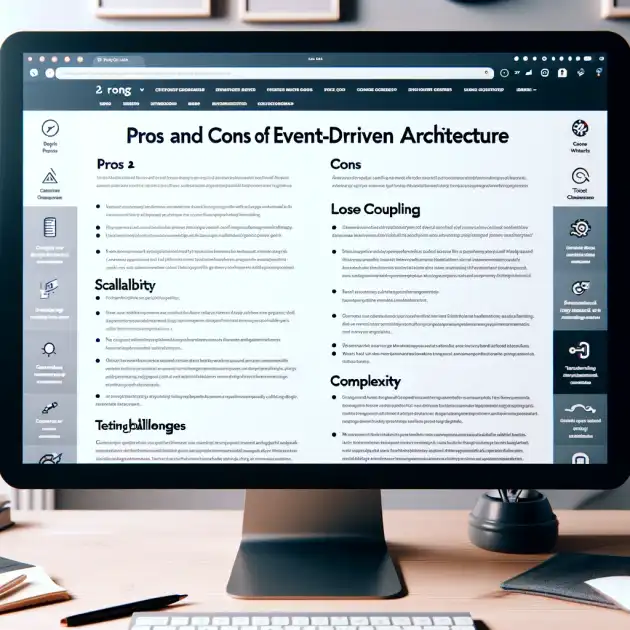Pros and Cons of Event-Driven Architecture
Event-Driven Architecture (EDA) has gained popularity in the software industry as a way to build scalable, responsive, and loosely coupled systems. By focusing on events as the primary communication method between different parts of a system, EDA can offer significant advantages, but it also comes with its own set of challenges. In this blog post, we'll explore the pros and cons of adopting an Event-Driven Architecture.
Pros of Event-Driven Architecture
1. Scalability
EDA allows for easy scaling of applications. Since components communicate through events, they can be scaled independently, allowing for more efficient use of resources and better handling of increased loads.
2. Loose Coupling
Components in an EDA are loosely coupled, meaning they are independent and know little about each other. This reduces dependencies and makes the system more flexible and easier to maintain.
3. Asynchronous Communication
EDA supports asynchronous communication, which can lead to improved performance. Components can process events at their own pace without waiting for other components, leading to faster response times.
4. Reactivity
Event-driven systems are inherently reactive, meaning they can quickly respond to changes or events as they occur. This makes them well-suited for real-time applications, such as monitoring systems or financial trading platforms.
5. Flexibility and Adaptability
Adding new features or modifying existing ones is easier in an EDA, as it usually involves introducing new event handlers or modifying existing ones without impacting other components.
Cons of Event-Driven Architecture
1. Complexity
Managing events, especially in a large system, can become complex. Tracking the flow of events and understanding how components interact can be challenging, leading to difficulties in debugging and maintaining the system.
2. Testing Challenges
Testing an event-driven system can be more difficult compared to traditional architectures. Ensuring that all possible event sequences are handled correctly requires comprehensive testing strategies.
3. Latency in Event Processing
In systems with a high volume of events, there can be latency in processing events, especially if the event handlers are resource-intensive or if there is a backlog of events to be processed.
4. Event Ordering
Ensuring that events are processed in the correct order can be a challenge, particularly in distributed systems where events may arrive out of sequence.
5. Error Handling
Error handling in an event-driven system can be more complex. Since the processing of events is decoupled, it can be harder to track where an error originated and how it should be handled.
Conclusion
Event-Driven Architecture offers a flexible and scalable approach to building software systems, particularly well-suited for applications that require real-time responsiveness and scalability. However, the benefits come with trade-offs in terms of increased complexity and potential challenges in testing and error handling. When considering EDA, it's important to weigh these pros and cons in the context of your specific application requirements and organizational capabilities.
